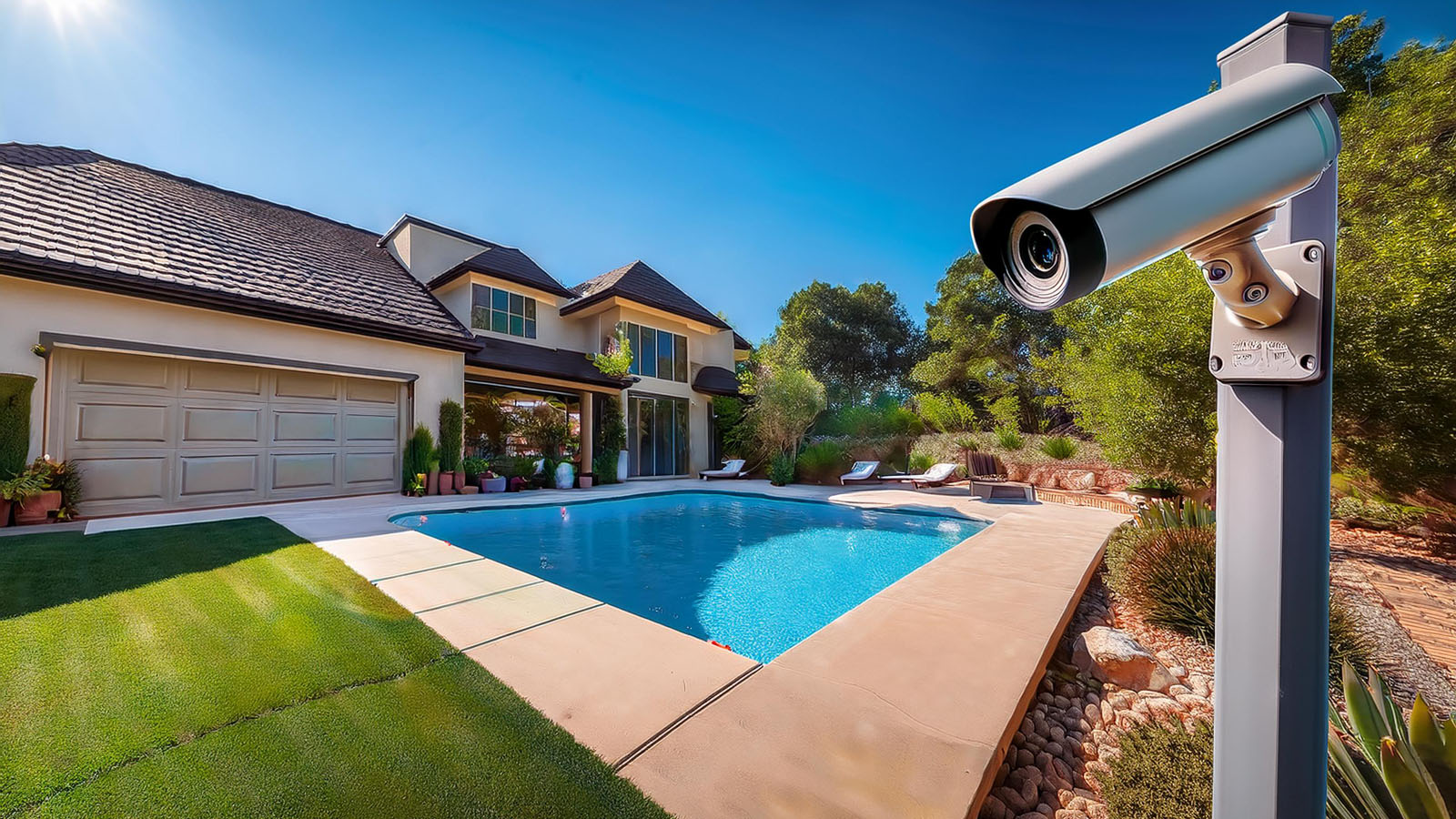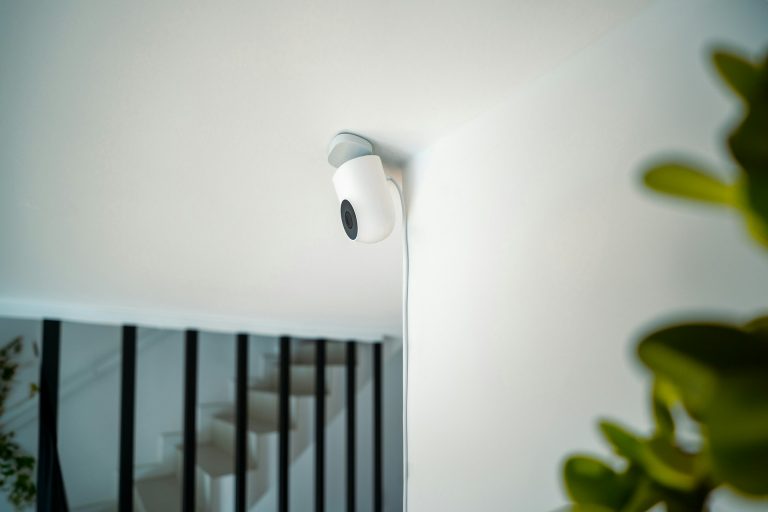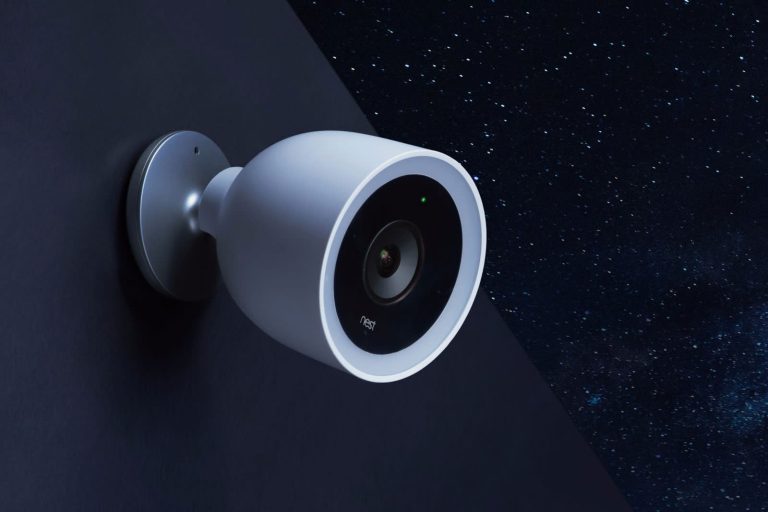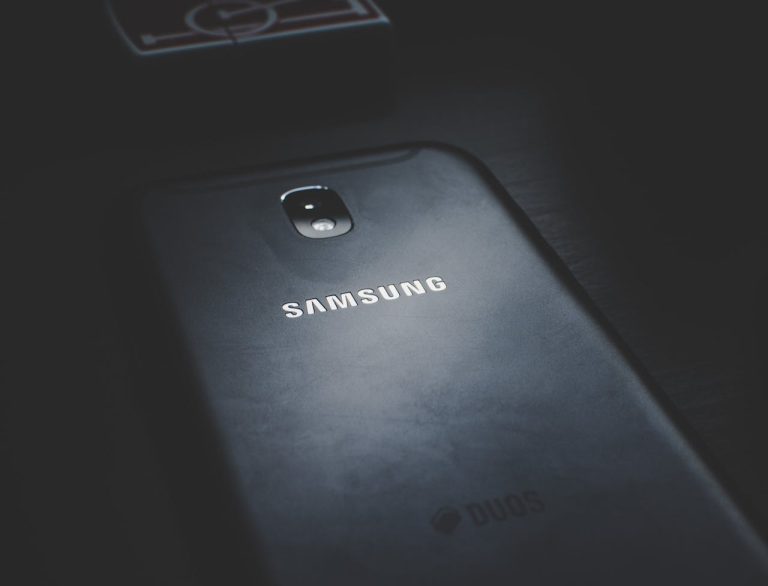Home security is a top priority for many homeowners, and one of the most effective ways to protect your property is by installing security cameras. Strategically placed cameras can deter criminals, provide evidence in case of an incident, and give you peace of mind knowing your home is always monitored.
However, to get the most out of your security system, it’s crucial to install cameras in the right locations. In this article, we’ll explore the places smart homeowners install security cameras and how these placements enhance overall home security.
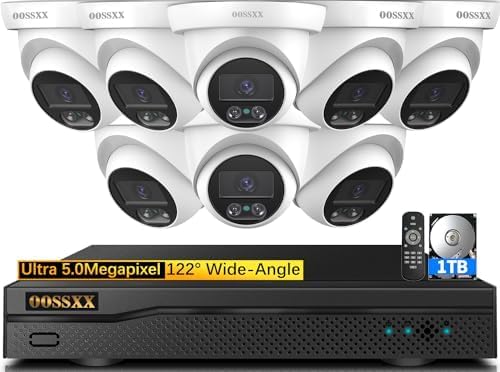
(5.0MP Definition Full HD) Wired Security Camera System Outdoor Dome Kits Home Video Surveillance Cameras CCTV Camera Security System Outside Surveillance Indoor
1. Front Door
Your front door is one of the most important places to install a security camera. Many burglars and intruders enter through the front door, whether they force entry or attempt to deceive you. A camera at the front entrance allows you to monitor everyone who comes to your home, from delivery drivers to potential trespassers. Pairing this camera with a video doorbell system can give you the ability to see and speak with visitors remotely, adding another layer of protection.
Tips for Front Door Camera Installation:
- Place the camera at an angle that captures a full view of the front door and surrounding area.
- Ensure it’s mounted high enough to prevent tampering.
- Consider using a camera with night vision and weather resistance for 24/7 surveillance.
2. Back Door and Side Entrances
Many homeowners forget about their back door and side entrances, but these are also common entry points for burglars. Installing security cameras at these locations ensures you have all potential access points covered. Criminals often look for less visible or more secluded areas of a home to break in, so monitoring these areas is crucial.
Tips for Back and Side Entrance Camera Installation:
- Position cameras where they can capture activity near doors and windows.
- Use motion-sensor cameras to save storage space and battery life, only recording when movement is detected.
- Opt for cameras with wide-angle lenses to cover more ground.
3. Driveway and Garage
Your driveway and garage are prime targets for thieves, especially if you store valuable items like vehicles, tools, or equipment. Installing security cameras here not only deters theft but also helps you keep an eye on who’s approaching your home. For homeowners with detached garages or longer driveways, cameras become even more essential.
Tips for Driveway and Garage Camera Installation:
- Position the camera to capture the entire length of the driveway.
- Use cameras with high resolution to clearly identify vehicle details and license plates.
- Consider cameras with two-way audio to communicate with visitors or deter suspicious individuals.
4. Main Hallways or Staircases (Indoors)
While outdoor cameras cover entry points, indoor cameras in main hallways or near staircases can provide additional security. If an intruder makes it inside, these cameras will capture their movements as they navigate through your home. This footage is invaluable for law enforcement in identifying suspects and recovering stolen items.
Tips for Indoor Camera Installation:
- Choose discreet cameras that blend with your home’s décor to avoid detection.
- Place cameras in high-traffic areas, like hallways and near staircases, to maximize coverage.
- Make sure cameras have motion-detection capabilities and adjustable settings for privacy when you’re home.
5. Yard or Outdoor Perimeter
Smart homeowners also monitor the outdoor perimeter of their property. Installing cameras around the yard or fence line gives you visibility of your home’s boundaries, helping you catch potential trespassers before they reach the house. This is especially important for larger properties or homes in more secluded areas where visibility is limited.
Tips for Yard and Perimeter Camera Installation:
- Position cameras to cover blind spots, such as corners of the yard or hidden paths.
- Use cameras with zoom and pan functions to get a closer view of suspicious activity.
- Opt for wireless outdoor cameras with long battery life for areas far from power sources.
6. Windows
Windows are a vulnerable entry point for burglars, especially those located on the ground floor or in darker, more hidden parts of the home. Installing security cameras that monitor window areas ensures that no point of entry goes unnoticed. This placement is particularly useful if you have large windows or patio doors that face the backyard or side alleys.
Tips for Window Camera Installation:
- Ensure the camera has a clear line of sight to the windows without obstructions.
- For added protection, combine cameras with motion-sensor lights to deter potential burglars.
- Use cameras with night vision and weatherproofing for optimal performance.
7. Basement Entrances or Windows
Basements often have lower visibility, making them a prime target for break-ins. If your basement has an entrance or windows that could be accessed from the outside, it’s a smart idea to install security cameras in these areas. Basement windows are typically small and overlooked, but a determined burglar could use them to gain access to your home.
Tips for Basement Camera Installation:
- Install cameras near basement windows and entrances.
- Ensure the cameras are equipped with night vision since basements are usually poorly lit.
- Mount cameras out of reach to prevent tampering.
8. Porch or Patio Areas
Installing security cameras on your porch or patio helps you keep an eye on any outdoor living spaces, which are often vulnerable to theft. Whether it’s monitoring packages left at your door or ensuring no one is snooping around your backyard, having a camera in these areas adds an extra layer of protection.
Tips for Porch and Patio Camera Installation:
- Mount cameras to capture the entire patio or porch area.
- Use cameras with two-way audio for remote communication with visitors or delivery personnel.
- Consider a camera with a wide field of view to monitor both the porch and nearby entry points.

(5.0MP Definition Full HD) Wired Security Camera System Outdoor Dome Kits Home Video Surveillance Cameras CCTV Camera Security System Outside Surveillance Indoor
9. Swimming Pool Area
If you have a swimming pool, it’s not only a place for relaxation but also a potential safety hazard, especially if you have children or pets. Install security cameras near the pool area to monitor for accidents and ensure everyone is safe while enjoying the water. It’s also helpful in keeping an eye on the area during times when the pool isn’t in use.
Tips for Swimming Pool Camera Installation:
- Use weatherproof, high-resolution cameras to capture clear footage.
- Ensure the camera is placed to monitor the pool from different angles, especially entry points like gates.
- Use motion-activated cameras to record activity only when necessary.
Conclusion
Smart homeowners know that strategic camera placement is key to a strong home security system. By installing security cameras at the front door, back and side entrances, driveway, windows, and other critical areas, you can maximize your home’s security. Each location serves a unique purpose in deterring criminals, monitoring activity, and providing valuable footage in case of an incident.
Whether indoors or outdoors, ensuring that all potential access points are covered will give you peace of mind and keep your home safe.

